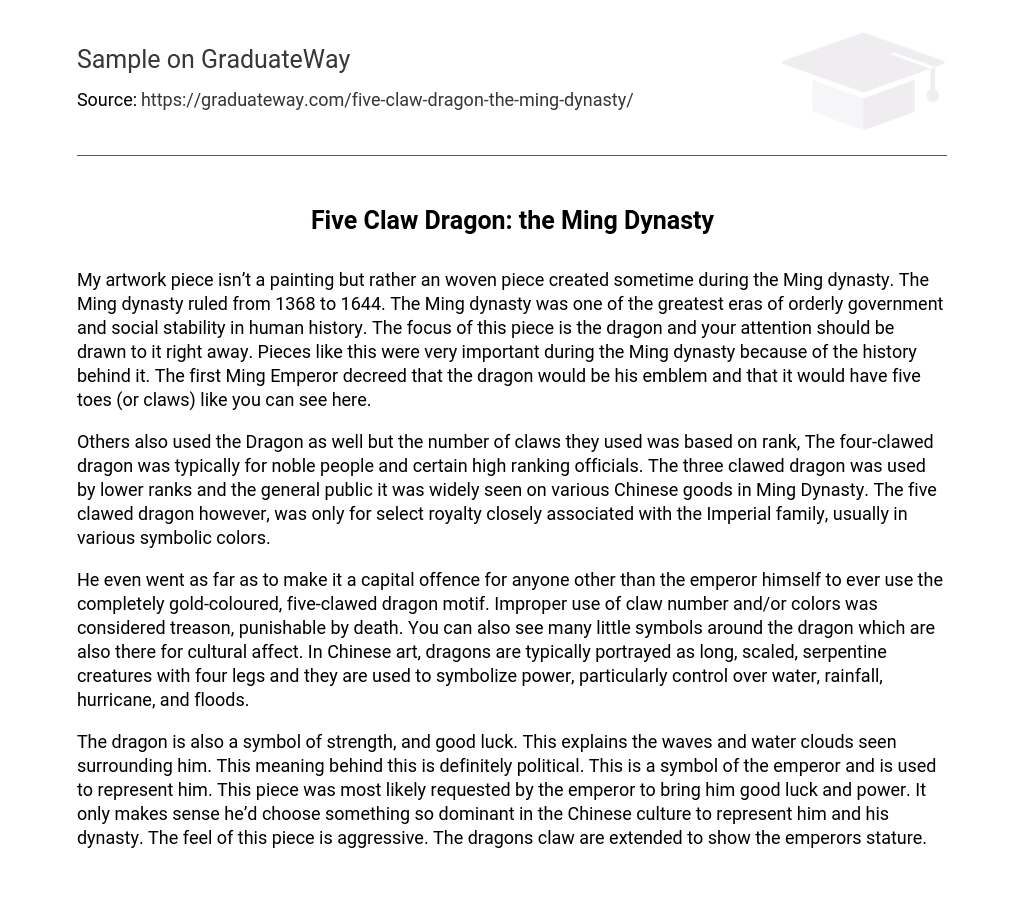My artwork piece isn’t a painting but rather an woven piece created sometime during the Ming dynasty. The Ming dynasty ruled from 1368 to 1644. The Ming dynasty was one of the greatest eras of orderly government and social stability in human history. The focus of this piece is the dragon and your attention should be drawn to it right away. Pieces like this were very important during the Ming dynasty because of the history behind it. The first Ming Emperor decreed that the dragon would be his emblem and that it would have five toes (or claws) like you can see here.
Others also used the Dragon as well but the number of claws they used was based on rank, The four-clawed dragon was typically for noble people and certain high ranking officials. The three clawed dragon was used by lower ranks and the general public it was widely seen on various Chinese goods in Ming Dynasty. The five clawed dragon however, was only for select royalty closely associated with the Imperial family, usually in various symbolic colors.
He even went as far as to make it a capital offence for anyone other than the emperor himself to ever use the completely gold-coloured, five-clawed dragon motif. Improper use of claw number and/or colors was considered treason, punishable by death. You can also see many little symbols around the dragon which are also there for cultural affect. In Chinese art, dragons are typically portrayed as long, scaled, serpentine creatures with four legs and they are used to symbolize power, particularly control over water, rainfall, hurricane, and floods.
The dragon is also a symbol of strength, and good luck. This explains the waves and water clouds seen surrounding him. This meaning behind this is definitely political. This is a symbol of the emperor and is used to represent him. This piece was most likely requested by the emperor to bring him good luck and power. It only makes sense he’d choose something so dominant in the Chinese culture to represent him and his dynasty. The feel of this piece is aggressive. The dragons claw are extended to show the emperors stature.





